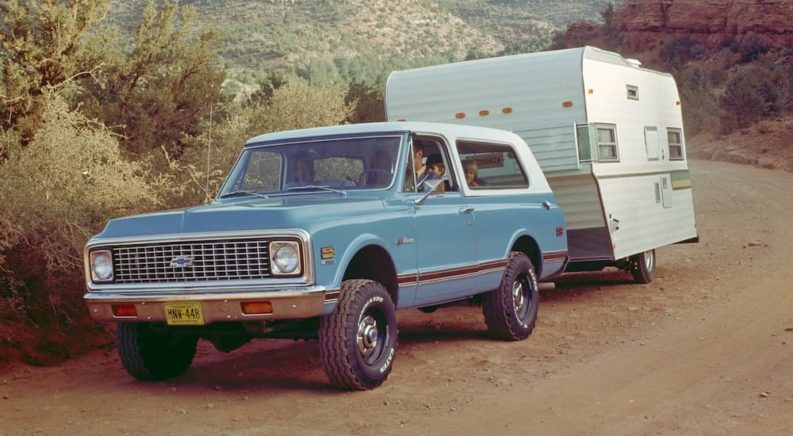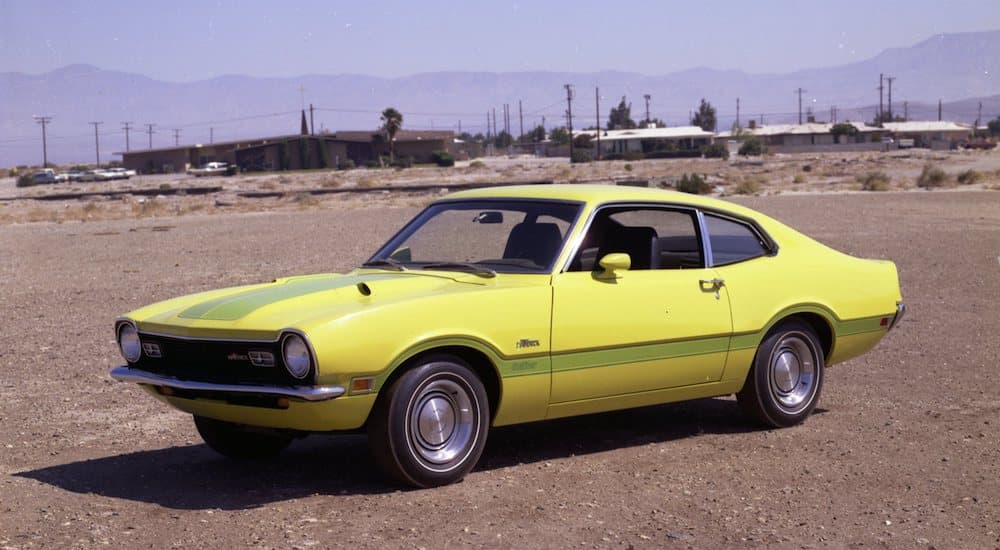Some vehicle nameplates have stayed true to form over the decades; sure, they’ll get updates and refreshes with redesigns for new generations, but at their heart, they remain the same. A Camaro from 30 years ago looks different from one from last year and has different options and features, but you could still look at both of them at a used car dealer and know they’re built on an essentially unchanged foundation and philosophy. These are classics that hold up well over time, and people keep coming back to them generation after generation.
Then there are other names and models that go a different way––you could look at both of them in a parking lot and never guess they have the same name. Sometimes this is due to a change in design or focus; other times, it’s more about a manufacturer liking a name and wanting to bring it back for a completely unrelated vehicle. Whatever the reason, it’s always interesting to see how certain nameplates can make a return in a way that is completely transformed from what came before.
#1 – The Chevrolet Blazer
We’ll start off with one that’s had more of an evolution rather than a massive change. Chevy has used the “Blazer” name on several different models over the last 50 or so years, and while there are some similarities between them, there are also massive differences. The first Chevy Blazer was introduced for the 1969 model year, and it was what we’d now call a full-size SUV, built on the Chevy C/K truck platform of the same time period. This model is also known as the K5 Blazer, and it was essentially a shortened truck designed to compete with models like the Ford Bronco.
Things got kind of weird and complicated for the “Blazer” name in the 1980s when Chevy introduced a second model called the S-10 Blazer, which was based on the Chevy S-10 pickup. After a decade of potential confusion, Chevy reorganized their lineup a bit, and in 1995 the K5 Blazer was replaced by the Chevy Tahoe, while the S-10 Blazer simply became the “Blazer,” and it grew into a midsize model. This Blazer was available through 2005 when it was discontinued; a few years ago, however, the Blazer nameplate returned as a new midsize crossover SUV with Camaro styling designed to fit in between the Equinox and Traverse in Chevy’s lineup.
#2 – The Ford Mustang
This is a bit of an interesting one because, in many ways, the Ford Mustang is as true to its heritage today as it’s ever been, with a rather large “but” in there. First introduced for the 1965 model year (some would argue ’64 and a half but let’s not get into that), the Mustang is the original pony car and was designed to offer an impressive blend of elegance, sophistication, and power. The modern Ford Mustang lives up to this reputation, and though it may look substantially different than it did nearly 60 years ago, it’s still an impressive muscle car.
The aforementioned “but,” however, is that now you have to be a bit more specific when you mention the Ford Mustang. Most people will probably assume you mean the pony car, but there’s now a second model in Ford’s lineup using the “Mustang” moniker, and it’s quite a departure from the past. You probably already know that the Ford Mustang Mach-E is not only an all-electric model, but it’s a compact crossover SUV. Personally, I’ve always found the name a bit strange and feel like it dilutes the “Mustang” brand a bit, but no one at Ford asked me, so here we are.
#3 – The Ford Maverick
Here’s a pretty great example of a manufacturer liking a name and bringing it back, even if it’s in no way related to what came before. Some people were upset that Chevy brought back the Blazer name as a crossover rather than a traditional SUV, but at least it’s still in the same ballpark. The original Ford Maverick was a compact sedan––available as either a two-door or four-door model––first introduced for the 1970 model year. It was built on the same platform as the Ford Falcon, with rear-wheel drive, and while it wasn’t a sports car by any means, it was a pretty sporty sedan that was designed to be a lot of fun to drive.
While the Maverick was discontinued in 1977, the name has lived on in overseas markets over the years, including a rebadged Nissan sold in Australia in the early 1990s and a compact SUV sold in Europe in the late 1990s. Recently, however, Ford has announced that the Maverick is making its return; as a sedan? Or perhaps a new SUV? Not at all; the all-new Maverick is Ford’s latest attempt at a compact pickup designed to be sold here in the US and slot in under their midsize Ranger. I’m a fan of offering more options for trucks, and I’m curious to see how Ford does with a compact in this market, but using the Maverick name seems a bit odd.
#4 – The Mitsubishi Eclipse
Here we’ve got another interesting transformation of a nameplate that’s not so much an evolution as pulling a name out of the trash can, dusting it off, and calling it a day. The original Mitsubishi Eclipse was a compact coupe designed for sporty performance and an affordable, exhilarating driving experience. Introduced for the 1990 model year, the Eclipse was built on a shared platform with other models like the Plymouth Laser. Initially a liftback coupe, a convertible model was available in later generations, and the Eclipse remained a fairly popular option until it was discontinued in 2012.
Only a handful of years later, however, the nameplate made a comeback with the Mitsubishi Eclipse Cross, which is a compact crossover SUV. Sure, they added the word “Cross” on there, but it’s still clearly meant to hearken back to their sporty coupe. The Eclipse Cross kicked off with the 2018 model year and has been fairly popular throughout its first generation. There were, no doubt, quite a few fans of the original Eclipse who felt a moment of elation at the name’s return, only to have that immediately crushed by the realities of the modern, crossover-hungry market.
#5 – The Honda Odyssey
Finally, let’s take a look at what I’d argue is one of the most extreme cases of rebranding an established name in the auto industry. The original Honda Odyssey was introduced for the 1977 model year, and it was an All-Terrain Vehicle (ATV). I don’t mean it was some kind of fancy off-road-focused SUV that was called a weird name like BMW’s “Sport Activity Vehicles”––I mean it was a single-seat, four-wheel ATV designed explicitly for playing in the mud and going wild on the trail. It had several generations and redesigns over more than a decade of production and was a very popular option among ATV enthusiasts during that time.
Although the original Odyssey came to an end when it was replaced by the Honda Pilot ATV in 1989, there are plenty of people with fond memories of weekends spent on their Odyssey throughout the 1980s. I can only imagine the sort of excitement they felt, and the intense disappointment that replaced it, when they heard about an all-new Honda Odyssey that returned a few years later for the 1995 model year…as a minivan. Now, more than 25 years later, most people immediately think of Honda’s successful minivan when they hear the name “Odyssey” (still in production in its fifth generation), but I’d like to think there are dozens of ATV diehards out there still waiting for the nameplate to return to the glory of what it was during the Reagan Administration. Keep following your dreams, you legends of the trail!





